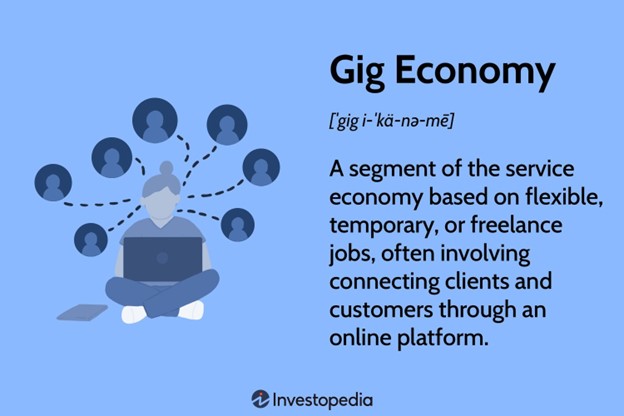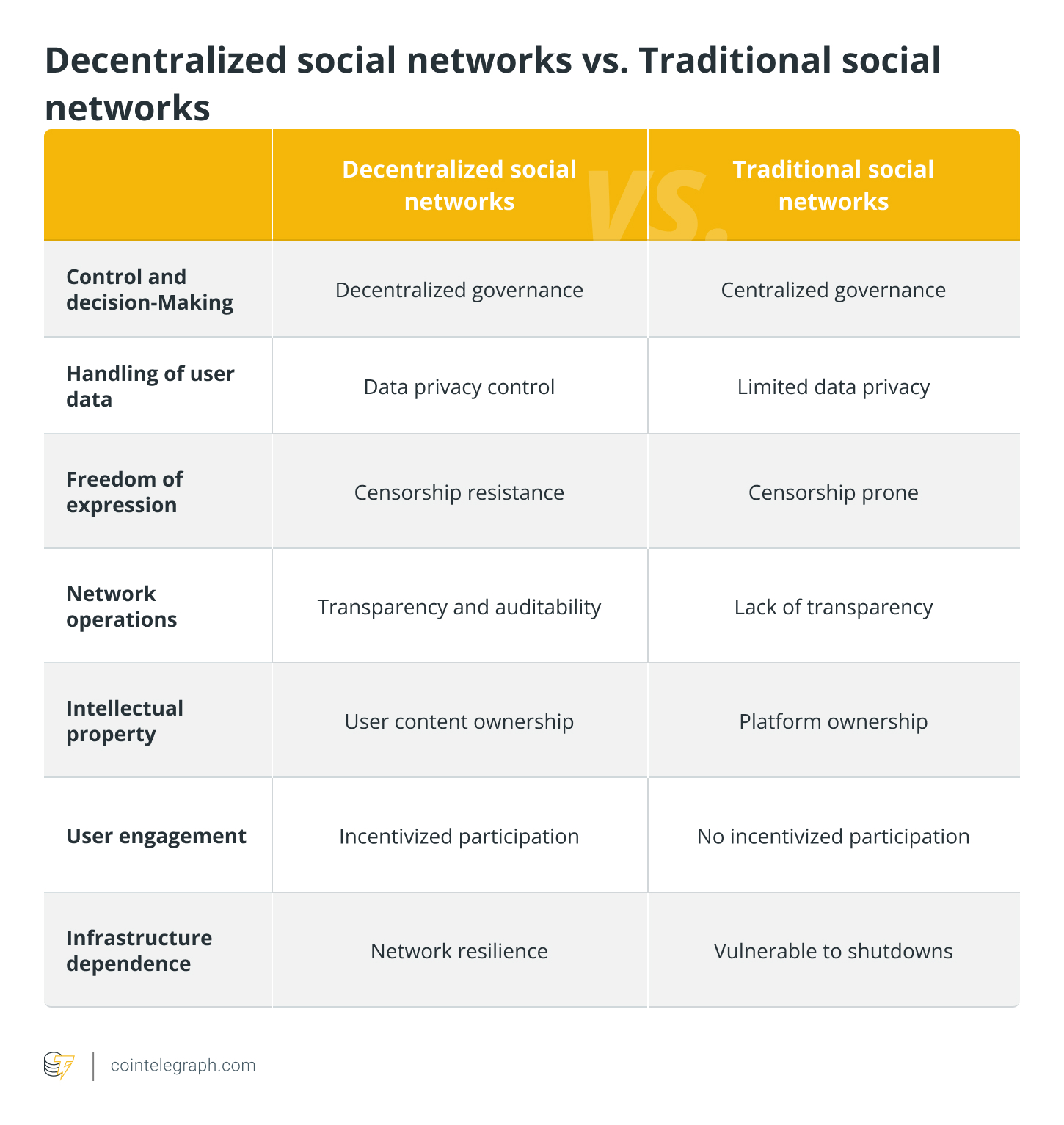17 min to read
Running a business in today's ever-evolving landscape requires more than a brilliant product or service; it demands a willingness to embrace change, innovation, and creative solutions that set you apart from the competition. In this comprehensive guide, we'll delve deeper into nine innovative solutions that possess the potential to not just elevate your business but to propel it towards unparalleled growth and lasting success.
At Codedesign we're always, on the lookout for the most exciting developments in the world. We strive to stay of the game riding the waves with enthusiasm. So when it comes to ensuring our clients have access to cutting edge solutions here's our approach; Firstly we have a team of experts who continuously explore the web attend workshops and collaborate with top professionals in our field. They are our observers constantly seeking out the big thing.
We then engage in brainstorming sessions (sometimes accompanied by pizzas because why not?) where we share our discoveries and delve into how they can benefit our clients. But it doesn't end there; we go a step further. We thoroughly test these solutions, experiment with them, and encounter some hiccups. Work diligently to resolve any issues until we become intimately familiar, with them. When we are absolutely confident that they are genuinely valuable do we present them to our clients.

So, here are some things we've been exploring and looking at. Today we are going to focus on big picture trends and not on all the specific digital marketing tools we've been using lately. Of course some are me accessible than others, but looking into the future is always a guessing game.
Embrace Artificial Intelligence and Automation
Artificial Intelligence (AI) has transitioned from science fiction to business reality. Incorporating AI-powered automation into your operations can be transformative. Picture this: chatbots that engage customers in real time, addressing queries and concerns swiftly, and predictive analytics that enable you to make data-driven decisions with uncanny accuracy.
Imagine how AI-driven insights can decipher complex market trends, providing you with the competitive edge needed to make informed choices. By implementing AI-powered processes, you're not just saving time and resources; you're fostering a more efficient and effective business model that speaks volumes about your commitment to innovation.
Obviously you've read and hopefully tried ChatGTP, but Google has been pushing really hard on this front as well. Google has made its Duet artificial intelligence tools, for Google Workspace available to everyone. These tools provide an AI powered boost to Google apps such as Gmail, Google Docs, Meet, Sheets and Slides. Similar to Microsofts Office 365 Copilot tools these tools are not free. After a 14 day trial period the Duet AI for Google Workspace package costs $30 per user per month for businesses. Pricing details, for consumers and smaller businesses will be announced by Google in the coming months.
At the Google I/O event Google introduced its AI chatbot named Bard. CNET conducted a comparison, between Bard, Bing and ChatGPT to determine which chatbot is the useful. The AI technology combines the power of computing with an interface that's fundamentally closer to how humans work.
Google has been experimenting with Duet AI ever since the tools were introduced at Google I/O in May. According to Aparna Pappu, the head of Google Workspace, over a million users have already tested it out. In a blog post shared on Tuesday during the Google Cloud Next conference she announced that Duet AI is now accessible, to all 3 billion Google Workspace accounts.
|
|
If you are interested in the way Google is pushing Ai to the final user check the Google Cloud Next 23 above. Soon we will dedicate a new article on Google is incorporating AI is Voice Search and in Campaign management.
Also super interesting was the announcement of startup Hiber of the integration of Google’s generative AI technology in its Hiber3D development platform, which aims to simplify the process of creating in-game content.
Here a great video on it:
|
|
Invest in Augmented Reality (AR) and Virtual Reality (VR)
Looking at this integrated capacity and how fast AI is modeling new reality it's impossible not think that all of this potential will become VR and AR environments pretty soon. And that we will generate real Universes from our living room. But how does that reflect on Marketing?
When it comes to customer engagement, Augmented Reality (AR) and Virtual Reality (VR) are veritable game-changers. The ability to showcase your products in interactive and immersive ways opens up new horizons. Imagine potential clients using AR to visualize how that sofa would look in their living room or VR enabling customers to explore a virtual store from the comfort of their homes.
These technologies provide experiences that resonate far beyond traditional marketing methods. They forge genuine connections and memories, ensuring your brand remains firmly etched in the minds of consumers. AR and VR aren't just trends; they're dynamic tools that empower you to create narratives that captivate and leave a lasting impact.

From an artistic performance, Powerwolf have made history as the first-ever band to use augmented reality during their performance at a live music festival. The German band teamed up with ARTE Concert and the 0221 Mediaagentur to use video game technology to create a monstrous wolf above the stage in real-time during their set Germany.
All the big tech companies are looking into this technology and expanding it every single week. Apple Is Working on an Augmented Reality Windshield for Cars, so soon maybe your experience driving will be completely immersive? Pretty awesome. Apple seems to believe that augmented reality is the future. Following the introduction of their Vision Pro headset this year the company is now looking into ways to incorporate AR technology into automobiles. In fact recently Apple filed a patent related to an augmented reality windshield as reported by Drive on Tuesday. Also, the Mercedes-Benz S-Class has an optional augmented-reality head-up display and the next-generation MBUX infotainment system.

Leading this tech expansion has been Meta and Facebook, so, Meta might have a secret VR headset that may have a key advantage over Apple's Vision Pro. The headset, named Flamera, solves a problem with mixed reality, and the solution is right in front of our eyes.
|
|
Naturally replicating an experience that closely resembles real life perception is quite challenging. It becomes more difficult when considering the disparity, between the cameras on headsets and the positioning of our cameras" (our eyes). However Meta has an advantage within its Reality Labs Display Systems Research (DSR) team. They believe they have discovered the solution, to implementing passthrough technology.
"The Flamera optical design works best when the headset is thin, which lets us put the passthrough cameras as close to the user's eyes as possible," says Grace Kuo, a Research Scientist in Meta's DSR team. "With our work on light field passthrough, we're focused on previewing the experience of perspective-correct MR passthrough," adds Douglas Lanman, Director of DSR.
Still, Flamera may be the start of something big. And the slate of new mixed reality headset releases in the coming months, culminating in Apple's Vision Pro launch early next year, makes technology developed by Meta's DSR team something to keep an eye on.
Another tech giant to keep an eye on is Tik Tok with “Effect House,” which allows creators to build AR effects for use in the video app, is officially out of beta. You can now download Effect House 3.0 and join TikTok’s official Effect House community on Discord, where they can be kept up-to-date on the latest events and challenges, office hours, and also connect with other effect creators. The launch of the platform last year put TikTok in closer competition offering a range of tools that allow developers to build out AR experiences and effects for their own applications.
Prioritize Sustainability and Eco-Friendly Practices
It looks unrelated with the previous topics, but its impossible to talk about tech without mentioning energy. The current global climate crisis has thrust sustainability into the spotlight, and businesses have a pivotal role to play. Integrating eco-friendly practices into your operations isn't just a choice – it's a necessity. Imagine sourcing materials from environmentally responsible suppliers, implementing energy-efficient practices, and reducing waste through innovative recycling initiatives.
However, the benefits extend beyond environmental consciousness. Embracing sustainability demonstrates a deep commitment to social responsibility, resonating with conscious consumers who prioritize ethical brands. Not only are you contributing to a better world, but you're also cultivating a positive brand image that attracts like-minded individuals.
Companies should adopt a cyclical mindset rather than a linear one when considering their production processes. By examining and reimagining the waste they produce, they can not only save money but also boost productivity. In today's age, where consumers value sustainability, genuine and consistent eco-friendly initiatives foster deep connections with employees, customers, and the community.
Interestingly, many companies continue to print excessively despite being in a digital age. But this isn't necessary. Embracing an entirely digital workflow benefits both the environment and the business. It enhances organization, transparency, and efficiency while cutting down on the consumption of natural resources. Even if companies opt for recyclable paper, going entirely digital has a far more positive impact.
For real change, companies need to invest in modern technologies and align with suppliers that champion sustainability, like using renewable energy and cutting down emissions. The returns? Both improved financial outcomes and a sterling brand reputation.
Additionally, companies should consider defaulting to remote work for employees who don't need to be on-site. While remote work has its pros and cons, there's no denying its environmental benefits. Even with cleaner transportation options, many still rely on non-green energy sources. Less daily commuting means a smaller carbon footprint. Simple as that.
Furthermore, adopting a remote work culture can offer more than just environmental benefits. Employees often report a better work-life balance, which can lead to improved morale and, in turn, higher productivity. Companies also save on overhead costs, such as utilities and office space.
It's essential, however, to ensure that the shift to remote work doesn't compromise team collaboration or individual well-being. Tools and platforms are available today that foster collaboration and maintain team unity, regardless of physical distance. Regular virtual meetings, team-building activities, and open channels of communication play a pivotal role in a successful remote work environment.

On another note, companies should look into other sustainable practices outside their immediate production processes and daily operations. How about community outreach programs or partnerships with local eco-friendly initiatives? Supporting or launching tree-planting initiatives, beach clean-ups, or renewable energy projects can make a significant difference.
Cultivate a Remote-Friendly Culture
The COVID-19 pandemic reshaped the way we work, and remote work is now an integral part of the business landscape. Creating a remote-friendly culture isn't just about accommodating current circumstances; it's about embracing a flexible and adaptable way of working that attracts top talent regardless of geographical limitations.
Imagine providing your team with the tools and resources needed to collaborate seamlessly from different corners of the world. Consider how offering flexible work arrangements can boost morale and productivity. By prioritizing a remote-friendly culture, you're investing in a workforce that thrives on autonomy, empowerment, and the freedom to achieve their best.
Explore Business Collaboration Tools
Working with remote teams, collaboration has become more important than ever. Streamlining communication and establishing efficient workflows are essential for successful operations. A good business VoIP system enables you to connect with colleagues anywhere in the world without worrying about latency or reliability. For example, and as seen at https://saicom.io/ cloud BPX technology can simplify complex processes and reduce the time needed to accomplish tasks. Not only does this create more efficient collaboration, but it also empowers teams to reach their fullest potential.
Collaboration tools such as video conferencing and shared workspaces allow your team to pool resources and access information from different locations. Having real-time conversations with colleagues in distant offices, or sharing documents without ever having to leave your desk is now possible - and essential - for businesses of all sizes. Whether you're working with remote teams or in-house staff, efficient collaboration should always be a top priority.
The online collaboration software that stands out allows teams to effortlessly work together on a range of specialized tasks. Employees not expected to work in isolation. The key to achieving improved efficiency and increased productivity lies in having the tools at your disposal. Some tools offer a variety of features, such as cloud document storage for managing tasks and video conferencing for meetings. They seamlessly function on both devices and desktops or laptops. Importantly these tools prioritize clarity, simplicity and reducing misunderstandings. They empower every employee to connect with the person, within the company of their location in order to address and resolve issues efficiently.
Ok, so what is our collaborative tools tech stack at Codedesign? Here are the top tools we use:
Microsoft 365 has an added advantage of including Microsoft Teams in its package, which allows for Unified Communications integrated with traditional office software. What makes Microsoft 365 even more appealing is that it can be used not only with Windows but also with Mac, Android and iOS devices. This is important because Microsoft Office is still the most widely used and essential office suite, surpassing competitors like OpenOffice and Google Workspace (formerly G Suite) in terms of functionality and user friendliness.
While we do use Microsoft Teams, Slack stands out as a powerful collaboration tool with a large user base worldwide. It's a highly intelligent platform available on both mobile and desktop devices. Slack enables direct messaging (DMs) and file sharing among individuals or groups of employees. Additionally, it offers the flexibility to organize conversations into various channels based on specific projects, technical support, general chat topics and more.
If you're looking for a straightforward way to map out complex ideas effectively, Miro is an excellent solution!The majority of the tasks you'll be doing in Miro revolve around what they call boards, which are initially empty spaces. Starting one from scratch can feel overwhelming and time consuming, but thankfully, Miro provides templates that you can choose right from the beginning. In terms of mapping, we believe Miro is hard to surpass.
When it comes to our ecommerce development team's preferences, they absolutely adore Trello. This platform allows them to work with boards or lists that can be organized by teams and different tasks. Within these boards/lists, they can create to do lists and assign tasks to colleagues. Additionally, they have the option to leave comments on specific cards as a quick way of providing feedback.
What's more, Trello offers various integrations with apps like Evernote, GitHub, Google Drive and Slack. You can download the app for free or opt for premium options that provide access to additional features.
For digital agencies like ours, Google Workspace presents a unified platform that enhances collaboration, agility and client interactions. The integrated tools enable real time collaboration on projects and ensure teams stay synchronized regardless of their location. This is particularly important in the dynamic world of digital marketing where rapid iterations and client feedback loops are common.
Moreover, one of the advantages of Google Workspace is that it operates in the cloud, making it convenient to access campaign assets, communicate with clients and analyze data. This helps agencies streamline their operations and enhance overall efficiency.
Collaborative working is now a part of maximizing your teams potential. With that in mind we have curated a selection of the online collaboration tools available.
Tap into the Gig Economy

The gig economy isn't just a trend; it's a seismic shift in how we work and do business. As a business owner, you have the unique opportunity to harness this new paradigm to your advantage. Instead of traditional employment models, consider assembling a team of freelancers and independent contractors for specialized projects.
The flexibility offered by the gig economy allows you to access a diverse pool of talent on-demand, without the long-term commitments associated with full-time employment. This approach fosters innovation by bringing fresh perspectives to the table, leading to dynamic solutions that might not have emerged within the confines of traditional office structures.
Leverage Blockchain Technology
Blockchain technology's association with cryptocurrencies often overshadows its potential applications for businesses. Implementing blockchain can revolutionize transparency and security in your operations. Picture a supply chain where every step is traceable, ensuring authenticity and reducing the risk of fraud.
Consider how blockchain can create trust among your customers and partners. Transactions and interactions become verifiable and tamper-proof, fostering relationships built on a solid foundation of transparency. By embracing blockchain, you're not just adopting a technological solution; you're establishing a culture of trust that resonates through every aspect of your business.

Obvisouly Blockchain is controversial, especially with crypto in the middle. But we are not here to mention any political or ideological statement. As tech and marketing people we like to explore and understand the potential. Social media for example is being impacted and some people are migrating to blockchain social media as Steem (an innovative decentralized social media network where users are paid for curating and creating content), Verasity (another blockchain-based social media platform focusing on video content and monetization), Binded, Audius or Sapien.

Conceptually is an interesting movement but will it live in the future? It's early to tell. So far charching users for content has not been a reality. We will see what the future holds.
When it comes to making money from your content, there are a few important things to keep in mind:
- Understand your audience and niche; It's crucial to know who you're targeting and what they want. By understanding their needs, preferences and behaviors, you can create content that resonates with them and choose the most effective ways to monetize it.
- Highlight your unique value; What sets your content apart from others in the same field? Clearly communicating the benefits and solutions you offer will help attract and retain a dedicated audience.
- Explore different monetization models; There are various strategies you can use to make money from your content, such as advertising, sponsorships, affiliate marketing, subscriptions, selling premium content or products and crowdfunding. Consider the pros and cons of each model to find what works best for your specific audience and goals.
- Focus on quality and consistency; Consistently delivering high quality material builds trust with your audience and establishes credibility. Quality content leads to more viewership, higher engagement levels and increased revenue opportunities. It's also important to maintain consistency in terms of posting dates and the types of content you provide in order to retain existing followers while attracting new ones.
By taking these factors into consideration while monetizing your content, these companies can maximize there earning potential while effectively engaging with a target audience. But repetition and overlap make content relevancy very complicated, and diversification is critical.
Diversification is crucial because relying solely on one method to generate income can be risky. It's important to have multiple sources of revenue to reduce dependency on any single source. To achieve diversification, consider implementing a combination of different monetization strategies, exploring collaborations with other businesses and utilizing various channels and mediums to connect with a wider audience. These approaches prove effective in broadening your revenue streams and reducing potential risks.
Implement Subscription Services
Subscription models are more than just a way to secure consistent revenue streams; they're a means of nurturing lasting customer relationships. Imagine offering personalized product subscriptions tailored to individual preferences, creating an ongoing engagement that transcends the traditional buy-and-sell relationship.
Think about how these models promote customer loyalty. The convenience of receiving curated products regularly enhances brand affinity. By focusing on long-term value instead of one-time transactions, you're fostering a community of loyal customers who perceive your brand as an integral part of their lives.
Use and Abuse of Big Data Analytics
Data isn't just a collection of numbers; it's a goldmine of insights waiting to be discovered. Big Data analytics transforms raw information into actionable strategies. Imagine analyzing customer behavior patterns, identifying emerging market trends, and making informed decisions that resonate with your target audience.
Consider how data-driven decisions can help you stay ahead of the curve. By understanding your customers on a deeper level, you can tailor your offerings to meet their needs more effectively. This level of personalization isn't just a competitive advantage; it's a testament to your commitment to delivering exceptional value.
In conclusion, the world of business is in a constant state of flux, and the most successful companies are those that adapt and innovate. Whether you're integrating AI, exploring AR/VR experiences, or championing sustainability, these eight innovative solutions have the potential to reshape your business trajectory. Remember, the key is to remain open to new possibilities, embrace change, and cultivate a mindset of perpetual growth. Your journey towards a brighter business future starts with these transformative solutions.
About CodeDesign
Codedesign is a digital marketing agency specializing in e-commerce and B2B online marketing. Our digital team utilizes the latest digital marketing tools and strategies to help clients reach their business goals. We offer comprehensive services such as website design, search engine optimization (SEO), content marketing, performance marketing, social media marketing, CRM and marketing automation, email marketing, and more. Our experts create and implement customized digital marketing campaigns to increase website traffic, generate leads, and drive sales. Our expertise in e-commerce and B2B marketing allows us to understand the nuances of the digital marketplace and create effective marketing solutions tailored to their client's needs.
CodeDesign is leading:
- Digital Agency Lisbon
- Digital Marketing Agency
- Amazon Marketing Agency
Feel free to contact us to see the unprecedented growth of your business.
FAQS - Frequently Asked Questions
How can artificial intelligence and automation drive business efficiency?
Artificial intelligence (AI) and automation significantly drive business efficiency by streamlining operations, reducing manual labor, and optimizing decision-making processes. These technologies can automate routine tasks, from customer service inquiries through chatbots to data entry and analysis, allowing employees to focus on more strategic and creative tasks. AI can also provide predictive insights, enabling businesses to anticipate market trends, optimize supply chains, and personalize customer experiences. By integrating AI and automation, companies can achieve higher productivity, minimize errors, and reduce operational costs, ultimately enhancing competitiveness and profitability.
What are the benefits of incorporating augmented reality (AR) and virtual reality (VR) in marketing?
Incorporating AR and VR into marketing strategies offers immersive and engaging experiences that can significantly enhance customer interaction and brand perception. AR allows consumers to visualize products in their own environment before purchasing, improving confidence in buying decisions, while VR creates fully immersive experiences that can transport customers to virtual spaces or experiences related to the brand. These technologies can increase engagement, enhance customer satisfaction, and create memorable brand experiences that drive loyalty and word-of-mouth promotion. Additionally, AR and VR can provide valuable data on user interactions, enabling further personalization and optimization of marketing strategies.
In what ways can sustainability and eco-friendly practices impact business growth?
Sustainability and eco-friendly practices can positively impact business growth by aligning with increasing consumer demand for responsible and ethical business operations. Companies that adopt sustainable practices often see enhanced brand reputation, customer loyalty, and competitive advantage as consumers are more likely to support brands that reflect their values. Additionally, sustainability can lead to operational efficiencies and cost savings, as eco-friendly initiatives often involve reducing waste, conserving energy, and optimizing resource use. Moreover, sustainable practices can attract and retain talent, as employees increasingly seek to work for companies that contribute positively to society and the environment.
How does cultivating a remote-friendly culture benefit a company?
Cultivating a remote-friendly culture benefits a company by broadening the talent pool, reducing overhead costs, and increasing employee satisfaction and productivity. A remote-friendly approach allows companies to hire the best talent regardless of geographical limitations, leading to a more diverse and skilled workforce. It can also significantly reduce the need for physical office space, resulting in cost savings on rent, utilities, and commuting support. Moreover, offering flexibility in work location and hours tends to increase employee engagement and retention, as it supports a better work-life balance. These factors collectively contribute to a more agile, satisfied, and productive workforce.
What are the key advantages of using business collaboration tools?
Business collaboration tools offer key advantages such as enhanced communication, improved productivity, and streamlined project management. These tools enable real-time messaging, video conferencing, document sharing, and collaborative editing, facilitating seamless communication and coordination across teams, regardless of their physical locations. This immediate and accessible exchange of information speeds up decision-making processes and reduces project completion times. Additionally, collaboration tools often include features for task assignment, progress tracking, and integration with other business applications, further enhancing organizational efficiency and project oversight.
How can tapping into the gig economy benefit your business model?
Tapping into the gig economy can benefit your business model by offering flexibility, reducing labor costs, and accessing a wide pool of specialized talent. The gig economy allows businesses to scale their workforce up or down as needed, making it easier to manage workload fluctuations without the financial commitments of full-time employees. This flexibility can lead to significant cost savings in terms of salaries, benefits, and office space. Additionally, the gig economy provides access to a diverse range of freelancers with specialized skills, enabling businesses to undertake projects requiring specific expertise without the need for long-term hires. This can lead to innovation, improved service offerings, and the ability to quickly adapt to market changes.
What role does blockchain technology play in enhancing business transparency and security?
Blockchain technology plays a critical role in enhancing business transparency and security by providing a decentralized and immutable ledger for recording transactions. This technology ensures that transaction records cannot be altered retrospectively, fostering trust among parties. In industries where transparency is crucial, such as supply chain management, blockchain can provide verifiable and tamper-proof records of product origins, handling, and transportation, enhancing accountability and consumer confidence. Additionally, blockchain's encryption and consensus mechanisms significantly reduce the risk of fraud, data breaches, and unauthorized tampering, making it a powerful tool for securing sensitive information and transactions.
How can implementing subscription services foster customer loyalty?
Implementing subscription services can foster customer loyalty by providing consistent value, convenience, and personalized experiences. Subscription models encourage repeated interactions with customers, offering regular touchpoints for engagement and relationship building. By delivering curated products or services that cater to the individual preferences and needs of customers, businesses can create a sense of exclusivity and personal attention. This ongoing value exchange helps to deepen customer relationships, increase satisfaction, and encourage long-term loyalty. Additionally, the predictable revenue stream from subscriptions can enable businesses to better plan and invest in further enhancing the customer experience.
Why is big data analytics crucial for making informed business decisions?
Big data analytics is crucial for making informed business decisions because it allows companies to analyze vast amounts of data from various sources in real-time, providing insights that were previously inaccessible. Through data analytics, businesses can identify patterns, trends, and correlations in consumer behavior, market conditions, and operational performance. This intelligence enables predictive modeling, targeted marketing, personalized customer experiences, and optimized operations. By leveraging data-driven insights, companies can make more strategic decisions, reduce risks, and identify new opportunities for growth and innovation, ensuring they remain competitive in an increasingly data-centric world.
How can leveraging innovative solutions reshape your business trajectory?
Leveraging innovative solutions can dramatically reshape your business trajectory by driving efficiency, opening new markets, and creating competitive advantages. Innovations in technology, processes, or business models can streamline operations, reduce costs, and enhance product or service offerings. For example, adopting AI and machine learning can automate complex data analysis, improve decision-making, and personalize customer experiences. Similarly, exploring new distribution channels or business models, like direct-to-consumer or subscription services, can tap into new customer segments and revenue streams. By continuously seeking and implementing innovative solutions, businesses can adapt to changing market dynamics, meet evolving customer expectations, and sustain long-term growth and success.
Author

|
Author: Bruno Gavino. CEO of Codedesign. Head of Digital. Board Advisor at GLC Group. Board Advisor at CCLI. Board Advisor at ILC. Board Advisor at Portugal Ventures. Digital Marketing. |
|
His proficiency isn't just confined to executive roles; he extends his insights and expertise as a Board Advisor for a range of esteemed organizations. These include the GLC Group, CCLI, ILC, and Portugal Ventures. Each of these advisory roles speaks to his versatility, showcasing his ability to provide strategic guidance across diverse sectors and platforms. Rooted in a deep understanding of digital marketing, Bruno's influence has had a ripple effect, enabling businesses to harness the power of digital transformation and innovative marketing strategies. His leadership and advisory roles, combined with his commitment to pushing the boundaries of digital marketing, solidify his position as a key figure in the evolving digital landscape. |



Add comment ×